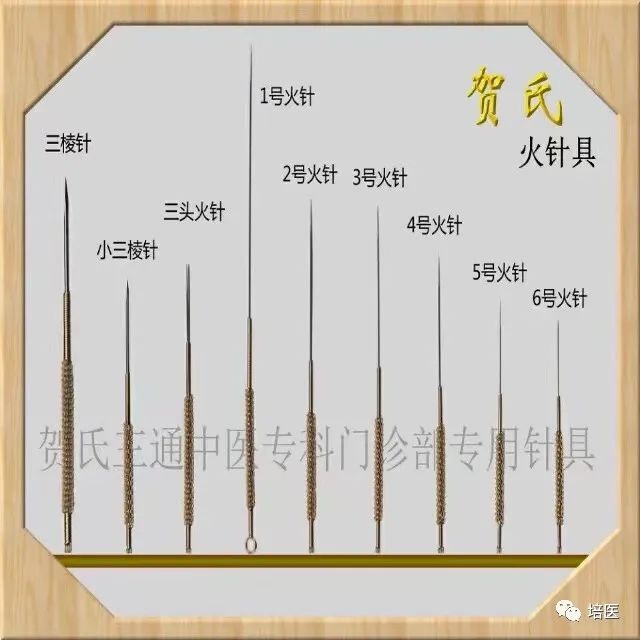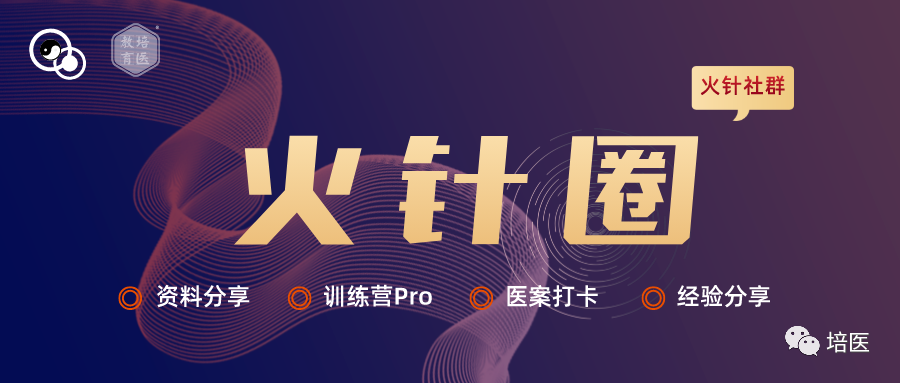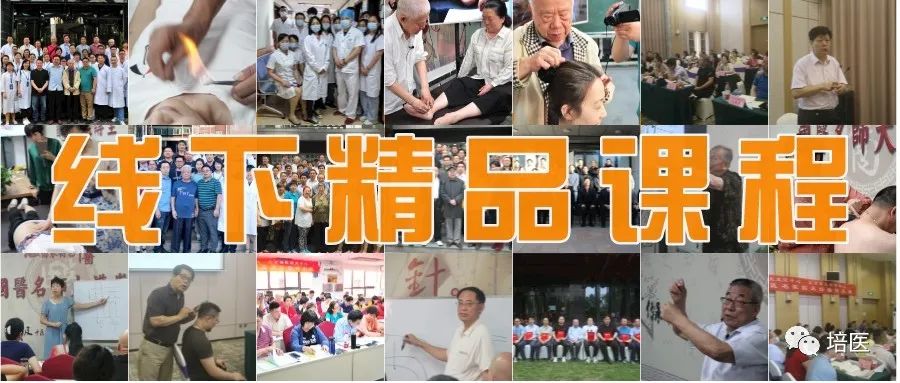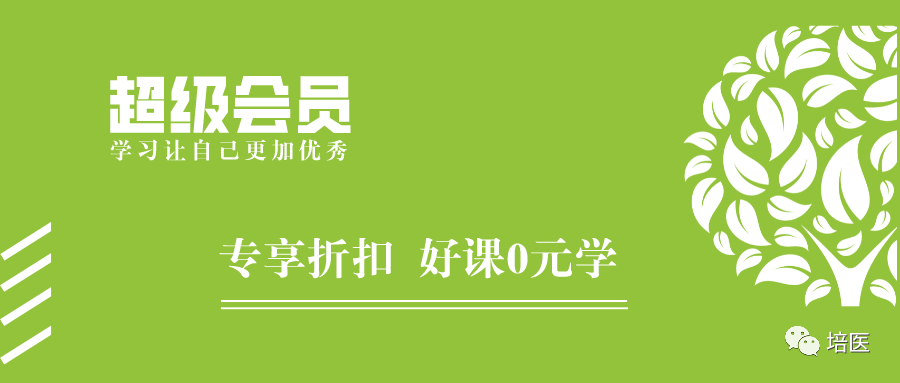Subscribe to Topics Read Highlights
Expert Consensus on the Application of Fire Needle Therapy in Dermatology
Special Therapy Group of the Dermatology and Venereology Branch of the Chinese Association of Integrative Medicine
Fire needle, also known as “burning needle,” “white needle,” “scorching needle,” and “pure needle,” refers to a method of treatment that involves using specific needles that are heated until red and then quickly punctured into local lesions or acupoints to treat diseases. In recent years, fire needle therapy has been widely used in the treatment of dermatological diseases. It is simple to apply, effective, and can warm and strengthen Yang Qi, promote tissue regeneration, expel pus, and relieve itching, making it worthy of clinical promotion. Fire needle therapy has shown good efficacy for infectious skin diseases such as furuncles, folliculitis, erysipelas, herpes simplex, herpes zoster, common warts, and flat warts; diseases of skin appendages such as acne, rosacea, and alopecia areata; pigmentary disorders such as vitiligo; dermatitis and eczema; pruritic diseases such as neurodermatitis and nodular prurigo; metabolic disorders such as cutaneous amyloidosis; physical skin diseases such as corns; psoriatic skin diseases such as psoriasis; and aseptic pustular diseases such as palmoplantar pustulosis. To further promote the application of fire needle therapy in dermatology, the Special Therapy Group of the Dermatology and Venereology Branch of the Chinese Association of Integrative Medicine has reached a basic consensus on the application of fire needle therapy in dermatology after long-term clinical practice, which is reported as follows.
01PARTMechanism of Fire Needle Therapy
Fire needle therapy achieves therapeutic effects through the dual stimulation of acupuncture and moxibustion, warming the meridians, dispelling cold, and resolving stasis. Modern research suggests that fire needle therapy can improve local blood circulation through thermal stimulation; it can increase the local pain threshold while reducing the occurrence of inflammatory factors in the body, blocking immune responses mediated by inflammatory factors to relieve inflammation and pain. After fire needle stimulation, it can promote the exudation of white blood cells and enhance their phagocytic function, helping to reduce inflammation and limit its spread throughout the body. Additionally, through non-invasive transcranial Doppler examination (TCD), it has been demonstrated that fire needle therapy stimulates the skin, transmitting signals to the cerebral cortex, activating regulatory mechanisms that can relieve vascular spasms and improve blood circulation.
02PARTFire Needle Instruments
Currently used fire needles mainly include the Shanxi Shihua Tang fire needle and the Beijing Hepuren fire needle, as well as fine fire needles. The Shihua fire needle is made of tungsten metal and is available in six types: single-headed fire needle, flat-headed fire needle, multi-headed fire needle, fire plumb needle, hook fire needle, and fire thread needle. The single-headed fire needle is categorized by diameter into fine fire needle (0.5mm), medium fire needle (0.75mm), and coarse fire needle (1.2mm). Three fine fire needles are combined to form a multi-headed fire needle, with a needle body length of 3cm and 3 needle tips exposed by 1cm.
The flat-headed fire needle has a diameter of 1.2mm, the same as the coarse fire needle, with a flat end of 0.5cm, also known as the flat-headed fire needle. The hook fire needle has the same body as the fine fire needle, with a 100-degree angle completed 0.8cm from the needle tip.
The Hepuren fire needle is made of tungsten-manganese alloy and is available in six types: fine fire needle, medium coarse fire needle, coarse fire needle, flat-headed fire needle, multi-headed fire needle, and triangular fire needle. The single-headed fire needle is categorized into coarse, fine, and medium types based on diameter, with 0.5mm for fine fire needle, 0.75mm for medium coarse fire needle, and 1.2mm for coarse fire needle. Additionally, some practitioners use fine needles to treat skin diseases. Coarse fire needles are commonly used for expelling pus and reducing swelling, suitable for puncturing cysts and nodules, but not suitable for the face and areas with thin muscles; medium coarse fire needles have a wide range of applications, except for the face and areas with thin muscles, while fine fire needles are mainly used for the face and other areas with thin muscles, as well as for the elderly, children, and those with weak constitutions. Flat-headed fire needles are often used for age spots and flat warts; multi-headed fire needles are primarily used for larger non-facial lesions such as herpes zoster and postherpetic neuralgia, psoriasis, chronic eczema, and pruritus. Fine fire needles can be used on various parts of the face and body, and can also be used for acupoint retention, showing good effects for facial paralysis and trigeminal neuralgia.

Purchase Hepuren fire needles and receive a special course and needle box
03PARTOperational Methods
3.1 Selection of Puncture Sites and Patient Positioning The sites are mainly the local lesions or surrounding areas. Patients should be instructed to take a comfortable position and avoid sudden movements, as fire needle therapy involves rapid puncturing, and sudden changes in position may alter the puncture site, causing unnecessary damage to healthy skin.
3.2 Disinfection ① The practitioner’s hands should be disinfected with 75% alcohol; ② Disinfect the puncture site: after locating the site, disinfect it with a cotton swab soaked in 75% alcohol or iodine; ③ Disinfect the fire needle instruments: ignite the alcohol lamp and move the flame continuously from the base of the needle to the tip to heat it red before use. After igniting, keep it close to the treatment site.
3.3 Heating the Needle Heat the needle until it is red before proceeding with the operation. The “Great Compendium of Acupuncture and Moxibustion: Fire Needle” states: “Burn on the lamp until red, and the method is effective. If not red, it cannot cure the disease and may harm the patient.” The practitioner holds the alcohol lamp in the left hand (the alcohol lamp should be filled to less than one-third), igniting it close to the required puncture site, while holding the needle in a pen-holding manner with the right hand, heating the needle tip and the front part of the needle body at an acute angle in the outer flame, and can slightly move the needle body to heat from the needle body to the tip until it turns red; if it does not turn red, it is ineffective.
3.4 Puncturing “The depth of the puncture and the burning method are a high-level summary of fire needle techniques.” After heating the needle, apply force with the wrist and quickly puncture the lesion site. The depth of the puncture needs to be carefully considered. The depth of the fire needle should be determined based on the characteristics of the skin lesions. If the lesion is a blister or papule, the depth should be sufficient to puncture the blister; if the lesion is a cyst, only the cyst wall should be punctured; if too deep, it may damage normal tissue, and if too shallow, it may not reach the lesion; if the lesion is a nodule, it should be punctured in the center of the lesion, avoiding compression to prevent the spread of inflammation; if the lesion is a patch, it should be punctured at the base of the lesion. The “Great Compendium of Acupuncture and Moxibustion: Fire Needle” mentions, “Avoid being too deep, for fear of injuring the meridians; too shallow cannot cure the disease, only moderate depth is appropriate.”
04PARTContraindications for Fire Needle Therapy
① Those who are overly nervous, hungry, fatigued, or intoxicated should not use it; ② Those with scar constitution should not use it; ③ Patients with mental illnesses should not use it; ④ Do not use on damaged or ulcerated lesions; ⑤ Diabetic patients or those with allergic constitutions should use it with caution; ⑥ The elderly, weak individuals, perinatal women, and infants should use it with caution; ⑦ Patients with hypertension, coronary heart disease, thrombocytopenia, and blood disorders should use it with caution;⑧ Caution should be exercised when using on points such as Jiuwei, Jianli, Juge, Zhongwan, Shangwan, and Xiaowan.
05PARTClinical Applications in Dermatology
5.1 Infectious Skin Diseases
5.1.1 Herpes Zoster Acupoint: Lesion area.
Operational Method: For lesions on the face, use fine fire needles; for other areas, use medium coarse fire needles. The patient should take a comfortable position, and after routine disinfection of the lesion area, heat the fire needle in the outer flame of the alcohol lamp until it is red or white, puncturing each herpes point 2-3 times, quickly withdrawing the needle, and the depth should be sufficient to break the blister; after puncturing, press with a disinfected cotton ball for 30 seconds to expel the blister fluid. After the operation, cupping can be applied to the puncture site to cover the treated area.
5.1.2 Erysipelas Acupoint: Local lesion.
Operational Method: For acute erysipelas, use fine fire needles; for chronic erysipelas, use medium coarse fire needles. Routine disinfection of the lesion area, heat the needle until red, and quickly puncture the lesion, with a puncture density of 1cm apart. Perform twice a week, and after improvement, change to once a week. Note: Dark blood may flow out after puncturing; do not apply pressure to stop the bleeding; let it stop naturally.
5.1.3 Flat Warts Acupoint: Local lesion.
Operational Method: Flat warts commonly occur on the face, often using the fine fire needle (0.5mm diameter) or fine fire needle. Routine disinfection of the lesion area, heat the needle, and quickly puncture the center of the wart, withdrawing quickly. For smaller warts, one puncture is sufficient; for larger warts, puncture around the wart, with the depth not exceeding the base of the lesion. For difficult-to-treat warts or those with poor response to previous methods, the burning puncture method can be used, lightly touching the skin with the fire needle tip before burning. After fire needle treatment, gentle moxibustion can be combined, applying local warmth for 15 minutes. During this time, do not scratch; let the scab fall off naturally. If the wart does not disappear after the scab falls off, further treatment is needed.
5.1.4 Common Warts Acupoint: Local lesion.
Operational Method: Use single-headed fire needles, multi-headed fire needles, or Hepuren flat-headed fire needles, starting with the largest or earliest appearing wart. Routine disinfection of the lesion area, for larger warts, use Hepuren flat-headed fire needles, heat the needle until red, and quickly burn the wart. For smaller warts, use Hepuren single-headed fine fire needles, heat the needle until red, quickly puncture the wart, and then quickly withdraw the needle, wiping the puncture with a dry cotton ball. The depth of the puncture should be at the base of the wart. For smaller warts, one puncture is sufficient; for slightly larger warts, several punctures may be needed.
Treatment frequency is once a week. Note: Keep the puncture site dry and clean to prevent infection.
5.1.5 Plantar Warts Acupoint: Local lesion.
Operational Method: Routine disinfection of the local lesion, use medium coarse fire needles or coarse fire needles, heat until red, and quickly puncture the wart, withdrawing immediately, with the needle entering and exiting straight, the depth should be just enough to penetrate the base of the lesion.
5.1.6 Folliculitis Acupoint: Local lesion.
Operational Method: Routine disinfection of the local area, use medium coarse fire needles, for larger lesions, a No. 5 disposable syringe needle can be used, heat the needle until red or white, and quickly puncture the center of the pus mass, for larger pus masses, puncture 3-4 times around the pus mass. Then use a dry cotton ball to press around the puncture to expel pus or an appropriate amount of blood. Instruct the patient to avoid water on the treated area for 2-3 days.
5.2 Diseases of Skin Appendages
5.2.1 Acne Acupoint: Local lesion.
Operational Method: For the face, use a 0.5mm fine fire needle, heat the needle until red, and quickly puncture the top of the lesion. For blackheads and papules, puncture once, and may slightly squeeze to expel the contents such as pus or blood; for hard nodules, puncture in the center and surrounding areas, with the depth reaching the middle of the nodule; for cysts, if there is a feeling of emptiness when puncturing, gently squeeze out the contents with a cotton swab. The principle of puncturing is to start with shallow punctures.
5.2.2 Rosacea Acupoint: Local lesion. Operational Method: Routine disinfection of the lesion area, heat the needle until red or white. Rosacea is characterized by capillary dilation during the erythematous phase; during this phase, use fine fire needles to puncture 2-3 times at the capillary sites; during the papulopustular phase and rhinophyma phase, use fine fire needles to quickly puncture the pustules and areas of connective tissue proliferation on the nose, puncturing 2-3 times for larger lesions.
5.2.3 Alopecia Areata Acupoint: Local lesion.
Operational Method: Routine disinfection of the area, use medium coarse fire needles, heat the needle, and quickly puncture at the selected acupoint and then withdraw.
5.3 Pigmentary Disorders
5.3.1 Vitiligo Acupoint: Local lesion. Operational Method: The patient should take a comfortable position, routine disinfection of the lesion area, the practitioner holds four 1-inch fine needles, heats the needle tips until red, and quickly punctures the white patch area, continuously puncturing, with the depth not being too deep, and the puncture distance can be set at 1cm.
5.4 Dermatitis and Eczema Diseases Eczema
Applicable Population: Chronic eczema; acute eczema is not suitable for treatment.
Acupoint: Local lesion.
Operational Method: Use a 0.5mm medium coarse fire needle, the patient should take a comfortable position, fully expose the lesion area, routine disinfection of the local area, heat the fire needle in the outer flame of the alcohol lamp until red or white, and quickly puncture the local lesion vertically, with a distance of 1cm between punctures.
5.5 Pruritic Diseases
5.5.1 Nodular Prurigo Acupoint: Local lesion.
Operational Method: Use medium coarse fire needles on the lesion area, heat until red, and quickly puncture densely.
5.5.2 Neurodermatitis Acupoint: Local lesion.
Operational Method: Use fine fire needles or medium coarse fire needles, routine disinfection of the lesion area, for mild lesions presenting only papular changes, use a light technique; if the lesions are severe and have progressed to lichenification with persistent and severe itching, use a dense puncturing method, heating the fire needle until red and quickly puncturing vertically, with the depth depending on the lesion, with each puncture spaced 1cm apart.
5.6 Metabolic Disorders Cutaneous Amyloidosis
Acupoint: Local lesion.
Operational Method: Use medium coarse fire needles, with the patient flexibly choosing a position while fully exposing the operation site, routine disinfection, heat the needle until red, quickly puncture vertically, and then withdraw quickly.
5.7 Physical Skin Diseases Corns
Acupoint: Local lesion.
Operational Method: Routine disinfection of the lesion area, for those with strong pain, local anesthesia can be applied around the corn using 2% lidocaine injection. Standard operation involves puncturing the corn and surrounding areas, with the depth reaching the root of the corn.
5.8 Psoriatic Skin Diseases Psoriasis
Applicable Population: Plaque psoriasis, characterized by dark red plaques with thick proliferation and many white scales. Suitable for stationary and regressive phases; fire needle therapy is not suitable during the active phase to prevent the occurrence of Koebner phenomenon. Acupoint: Local lesion.
Operational Method: Routine disinfection of the lesion area, use medium coarse fire needles, heat the needle until red in the alcohol lamp, and quickly puncture, with a puncture distance of 0.5-1cm, from the edge of the lesion towards the center.
5.9 Aseptic Pustular Diseases Palmoplantar Pustulosis
Acupoint: Local lesion.
Operational Method: The patient can sit or lie down, routine disinfection of the lesion area. Use medium coarse fire needles, heat the needle tip in the outer flame of the alcohol lamp, and quickly puncture the pustules in the local area, with rapid entry and exit. Perform twice a week until no new pustules appear.
06PARTConclusion
In summary, fire needle therapy is simple and effective, primarily applied to local lesions in dermatology. In recent years, the instruments and operational methods for fire needle therapy have become increasingly standardized, and its application in dermatology has become more widespread. The “Inner Canon” states: “Depth and shallowness are determined by intention, distance and proximity are the same; as if on the edge of a deep abyss, the hand is like holding a tiger, the mind is not distracted by external matters.” Practitioners must focus their intention on the needle when using fire needle therapy, standardizing their treatment. May we practice together and progress together with our peers.
Further Reading
-
[Fire Needle Circle] Welcome to join the fire needle family
-
[Fire Needle Technique] Fire needle puncture bloodletting method for treating chronic recurrent erysipelas in clinical practice
Recommended Columns






 ○ Note: This article is organized by Peiyi Education (www.tcmedu.com). This article is excerpted from the “Shanghai Journal of Acupuncture” March 2009, Volume 28, Issue 3, authors: Li Yan, Zhou Zhen, Wang Zunlai, Liu Baohong, Zhang Xifeng. The various prescriptions and formulas mentioned are for reference and learning purposes only and should not be used as prescriptions; please do not use them blindly. This platform does not bear any responsibility for any consequences arising from this!Scan the QR code after clicking the image
○ Note: This article is organized by Peiyi Education (www.tcmedu.com). This article is excerpted from the “Shanghai Journal of Acupuncture” March 2009, Volume 28, Issue 3, authors: Li Yan, Zhou Zhen, Wang Zunlai, Liu Baohong, Zhang Xifeng. The various prescriptions and formulas mentioned are for reference and learning purposes only and should not be used as prescriptions; please do not use them blindly. This platform does not bear any responsibility for any consequences arising from this!Scan the QR code after clicking the image

Excellence in education, medicine for the world. Growing in the medical field, walking together.



